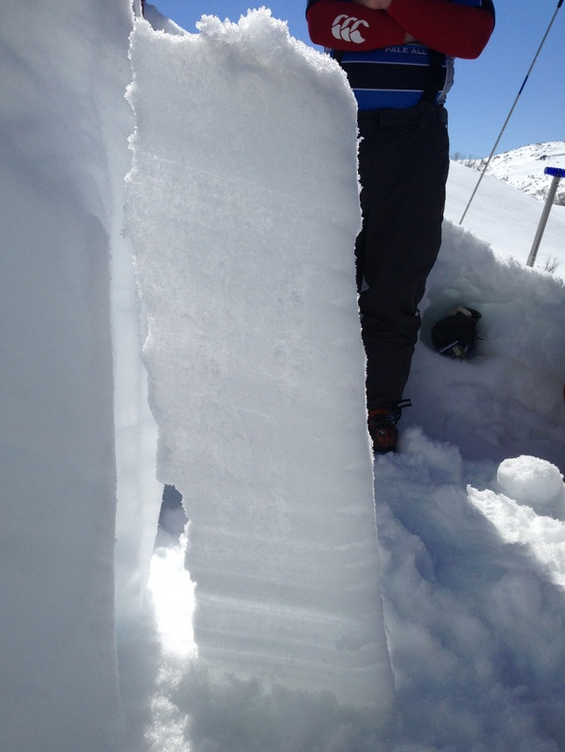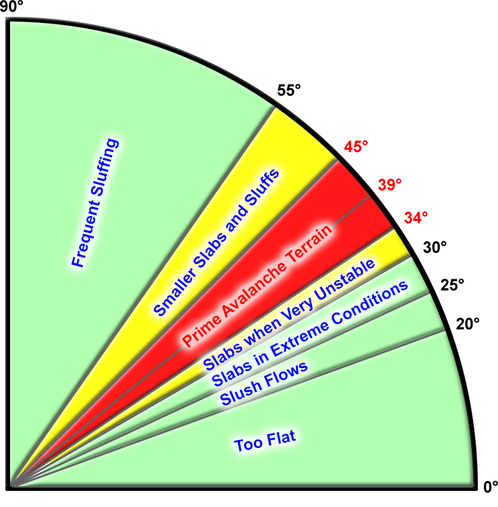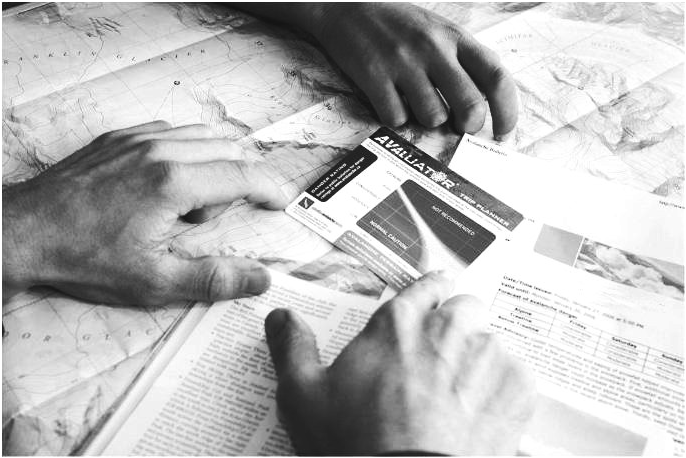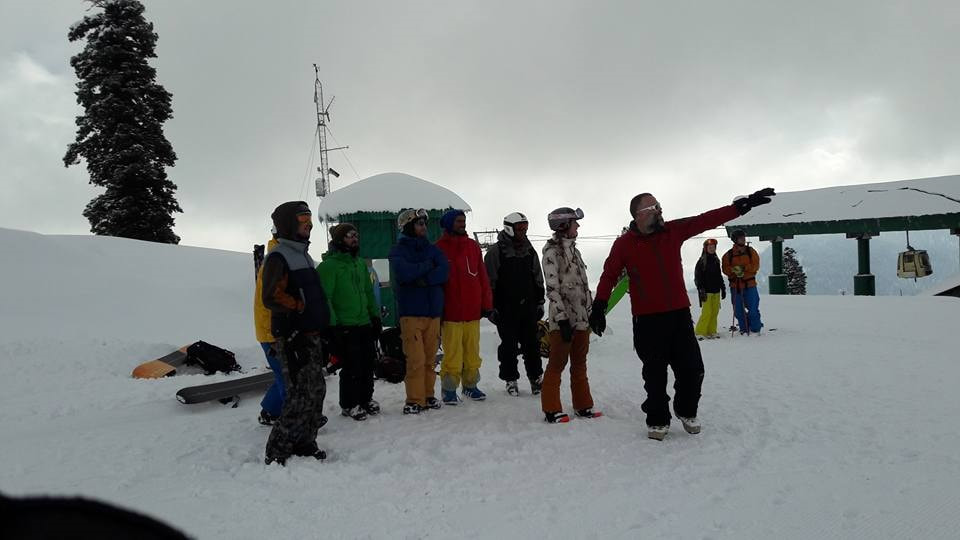Avalanche Formation
Snowpack formation
Snowpack layers form from variations in temperature, wind, humidity, etc. during storm events.
• Sun, wind, humidity, temperature, rain, etc. acting on the surface layers of the snow and changing them from their original form.
• Metamorphism of the sub-surface layers due to internal snowpack conditions (such as temperature, pressure, etc.).
Factors that drive change in the layers of the snowpack are always present; therefore the layers are constantly changing. This change can be rapid (e.g. freeze-thaw of the surface layers) or slow (e.g. long-term metamorphism of the sub-surface layers).
• Sun, wind, humidity, temperature, rain, etc. acting on the surface layers of the snow and changing them from their original form.
• Metamorphism of the sub-surface layers due to internal snowpack conditions (such as temperature, pressure, etc.).
Factors that drive change in the layers of the snowpack are always present; therefore the layers are constantly changing. This change can be rapid (e.g. freeze-thaw of the surface layers) or slow (e.g. long-term metamorphism of the sub-surface layers).
Avalanche Terrain
Pre-trip planning
Thorough pre-trip planning is an essential and often overlooked component to any outing. The bottom line is that safe backcounty travel starts with choosing trips that are appropriate for the conditions. This means that you first need to get a handle on the conditions, then determine what level of risk is appropriate to you and your companions, and finally research your trip options and choose one that everyone is comfortable with.
Reducing risk in the field
Now that you’re on your trip, what can you do to reduce your risk? First of all, it is incredibly valuable to recognize trends in previous avalanche incidents as you might be putting yourself at risk without knowing it! There are certain trailhead procedures which should become second nature, like putting your seatbelt on every time you get in a car. Then it’s time to use your knowledge about the terrain and conditions to avoid avalanche prone slopes. Finally, take all of this and factor in safety precautions, because no matter how much we know about avalanches, we still get surprised from time to time!
Remember, you control your own risk by choosing where, when and how you travel!
Remember, you control your own risk by choosing where, when and how you travel!
Rescue
While avalanche avoidance and hazard mitigation should be paramount, there is always some degree of risk while traveling in avalanche terrain. It is for this reason that a solid understanding of avalanche phenomena should go hand in hand with personal and group proficiency in the use of avalanche safety equipment.
Companion rescue is the victim’s best chance for survival, which makes avalanche rescue skills essential when travelling in avalanche terrain. Furthermore, rescue scenarios must be pre-planned and practiced so that the on-site response is fast, safe and efficient!
Contacting outside help is important!
Companion rescue is the victim’s best chance for survival, which makes avalanche rescue skills essential when travelling in avalanche terrain. Furthermore, rescue scenarios must be pre-planned and practiced so that the on-site response is fast, safe and efficient!
- European statistics show that survival chances for full burials are 91% if the victim is found within the first 18 minutes.
- The chance of survival falls very quickly after 18 minutes, reaching 30% or so for burials of 30 - 40 minutes.
Contacting outside help is important!
- Contacting outside assistance can happen rapidly if you are adequately prepared with the appropriate equipment. Mobilization and travel time to your location could take hours and potentially days due to weather and geography and availability of resources. The only real hope for people buried in an avalanche is rescue by their companions. Once rescued from the burial the person may have suffered significant injury and/or lost critical travel equipment and outside assistance, although not readily available, could be critical to your survival.
- Rescue services across Australia vary widely; some having avalanche rescue training and immediate access to helicopters while others may not be as well positioned to provide a rapid response.
Avalanche incident reporting
Reporting avalanches and avalanche incidents to the Snow Safety Australia serves a number of purposes:
Reports of any avalanches or notible events whether someone was involved or not, are greatly appreciated.
Please consider providing a report even if your party was not involved and you saw the aftermath or heard about it second-hand. You need not identify yourself or the people in the other party.
- Timely reporting of notable avalanches and avalanche involvements is of great help in helping others. Please consider reporting as soon as possible so Snow Safety Australia's Public Forecast can use this information to warn of hazards, create more accurate public avalanche forecasts, and educate others. These efforts help save lives.
- The information is used to record incidents and accidents for research purposes.
- Avalanche accident and incident information is useful as a learning tool to help others understand how and why accidents occur and, hopefully, to help prevent further accidents.
- Avalanche data in general is a useful tool for Snow Safety Australia in its efforts to educate Australians about the dangers that avalanches present to people and property.
Reports of any avalanches or notible events whether someone was involved or not, are greatly appreciated.
Please consider providing a report even if your party was not involved and you saw the aftermath or heard about it second-hand. You need not identify yourself or the people in the other party.






